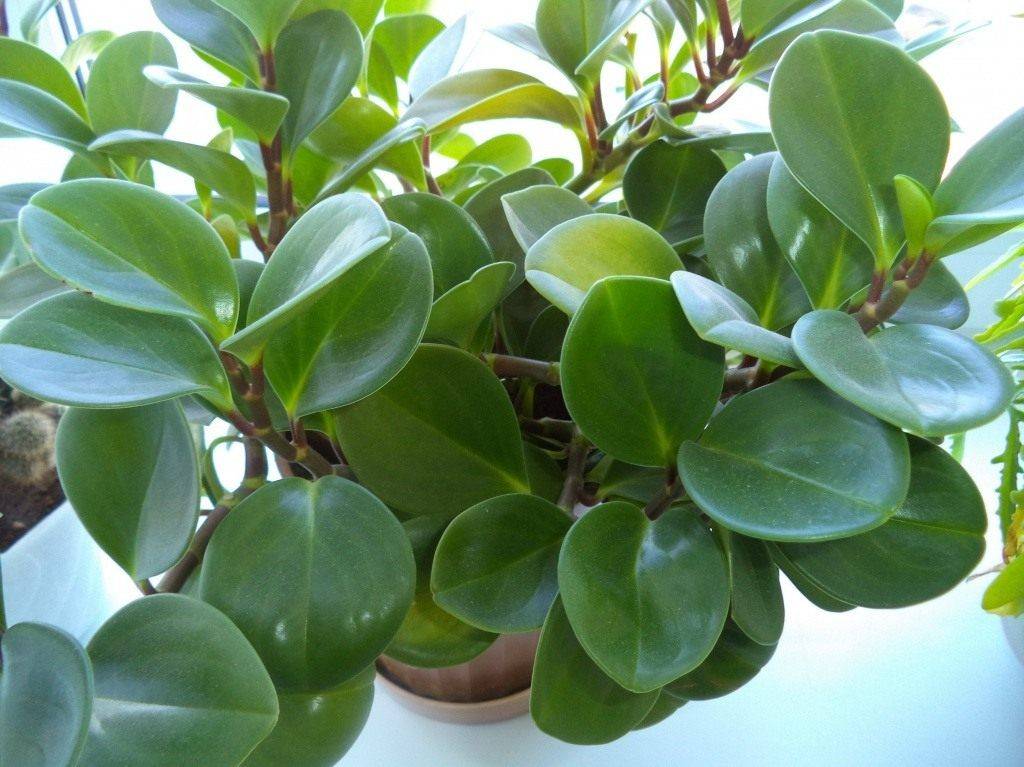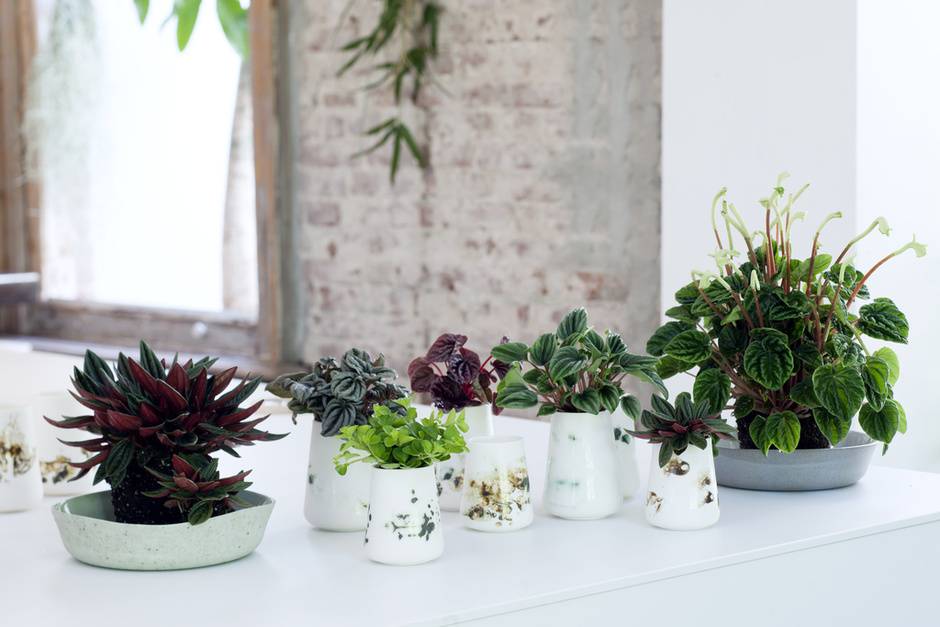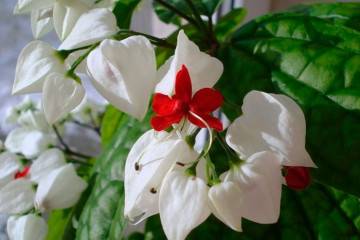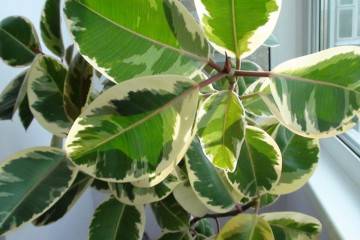Peperomia - caring for a flower at home
Content:
Peperomia is a houseplant that has recently become popular with flower growers. Today there are more than a thousand varieties of this flower. In the wild, it is most commonly found in the United States. Moreover, each of the varieties of peperomia has its own characteristics. The plant grows from 15 cm to half a meter.
What does peperomia look like?
Despite the fact that peperomia is a flower, it belongs to shrubs, among which there are perennials, as well as annual plants. The leaves of the flower are permanently green and pleasing to the eye. Florists prefer this plant as a decoration for the interior of an apartment, as well as garden plots.
Peperomia has thick stems on which leaves with a leathery surface are located. The flowers that appear on the plant are very small and bloom only in winter. The peduncle of the plant resembles a thin ear and does not differ in brightness or showiness. One species differs from another in both leaves and flowering. Some of them are grown only in pots. In addition, the flower is great for creating flower arrangements.
History of appearance
Peperomia belongs to the Pepper family, the name comes from the Greek "peperi" and "homois", which translates into Russian as "pepper" and "like". The flower was brought to European countries from southern Africa. Also, this plant can be found in subtropical forests.
Most often, the following peperomia varieties are grown indoors:
- peperomia Prostrata;
- Rosso;
- Caperata;
- variegated;
- monetary;
- bushy peperomia;
- chisel peperomia;
- creeping peperomia.
Care features
For peperomia to feel good, it needs to be cared for properly. The rules of care can be handled by a person who has never grown indoor flowers in his life.
Temperature
Home care for an indoor peperomia Rosso flower or another variety first of all begins with the temperature on which the comfort of the bush depends. In winter, it is necessary for the plant to maintain a regime in the range from 18 ° C to 23 ° C. The flower may start to ache if the room temperature drops below 15 ° C, then the leaves will begin to turn yellow and fall off.
In summer, the air should be warmed up to 25 ° C. If possible, in the summer the flower can be placed on the balcony or loggia. Moreover, in these places there should be no drafts, which are afraid of peperomia.
Lighting
Since peperomia refers to ampelous plants, it is most often used as a decoration for a balcony, loggia and window sill. In this case, the natural characteristics of the growth and development of the flower must be taken into account.
Under natural conditions, the plant grows in tropical forests and is located in the lower or middle tier. It is also necessary to take this feature into account when growing a plant in a house.Therefore, you need to place the plant in the back of the room or hang it from a window on the north or west side. If there is nowhere to put the flower, except on the sunny side, then the pot must be shaded with a light cloth or paper.
In winter, home care for the peperomia flower should be special. It is recommended to extend daylight hours with fluorescent lamps.
Watering
The peperomia flower loves moist soil. Therefore, you need to water it regularly. In this case, the water should be settled for several days.
In winter, watering is significantly reduced and the plant is introduced into the dormant stage. In addition, you need to ensure that the soil is not too wet, as in this case, the root system may begin to rot.
Spraying and moisture
For the development and growth of a flower such as peperomia, air humidity does not play a big role. For this reason, the regularity of spraying is determined by the grower. In August, the flower will respond positively to the spraying procedure.
Priming
For peperomia, it is important that the soil is loose so that air can easily flow through it to the root system. Its fertility is also important. The easiest way to buy soil for a flower is in a store. In this case, the grower will receive a ready-made mixture of mineral components that are important for the development of the plant.
In the case of self-preparation of the mixture, you will need to mix:
- leafy ground;
- humus;
- peat;
- sand.
Top dressing
This plant, like all others, is important for feeding. For this, both mineral and organic fertilizers are suitable. The application procedure must be carried out regularly. Thanks to this, the plant will feel good, showing it with the rapid growth of greenery.
When and how it blooms
Peperomia bloom begins only in the summer. The flower produces an erect peduncle similar to a plantain inflorescence.
Pruning
To make the bush as lush as possible, you need to pinch the top on each stalk.
How does it multiply
Peperomia, like other plants, reproduces in several ways:
- seeds;
- cuttings;
- dividing the bush;
- sheet.
Germinating seeds
It is customary to sow Peperomia Caperata seeds in the ground in early spring, in March. Sowing soil is pre-prepared from the following components:
- deciduous land;
- sand.
After sowing, the soil surface is sprayed with water. The dishes are covered with cling film and placed in a warm place. In the process of seed germination, the soil is periodically watered and ventilated. As soon as the seedlings appear at the stage of the second leaf plate, they dive into the box at a distance of 2 cm from each other. After the seedlings turn into small bushes, they need to be planted in pots.
Rooting cuttings
For cuttings, you can use the tops of the plant or cut the cuttings from the stem. In order for roots to appear on the cuttings, the following mixture must be prepared:
- peat;
- sand;
- humus.
The handle must have at least three internodes. It is planted in soil and covered with glass and placed in a warm place. The roots will appear in a month, after which the plant is planted in a separate pot.
Reproduction by dividing the bush
For this method, you need to remove the adult plant from the pot and divide it into two or three parts. In this case, the operation is carried out as carefully as possible so as not to damage the roots. New bushes are planted in separate vessels.
Leaf propagation
Peperomia can be propagated by a leaf. For this, one leaf is cut off, which is placed in sphagnum moss or in a mixture of peat and sand.In order for the roots to appear on the leaf handle faster, it is necessary to create suitable conditions. After a month, the first roots will appear, after which the shoot is transplanted into a pot.
Transfer
A peperomia flower is grown in a pot, which should be low, but at the same time much wide. With the growth of the bush, the vessel is chosen a little wider than the previous one. Drainage is important for the root system. It can be made from broken brick or expanded clay. On top of it, you need to pour a prepared mixture of peat, sand, humus and deciduous soil.
Possible growing problems
With improper care, the plant begins to hurt and may die as a result. To prevent this from happening, you need to know what disease affected the plants, why there were changes in the color of the leaves of the flower and how to fix the situation.
- Peperomia begins to shed foliage if it lacks moisture. It is necessary to revise the watering regime.
- The tips of the leaves dry out and turn brown as a result of sudden changes in temperature. You need to move the plant to a different location.
- A red spot has appeared on the leaves, and the stem begins to rot. This is all due to excess water in the root area. Watering rates need to be changed.
- Leaves wither and wrinkle in direct sunlight. The situation can be corrected only if the plant is transferred to another place.
- As a result of improper care, the plant can be infested with parasites. They can be destroyed with insecticides.
Peperomia Caperata and other varieties are not too demanding to care for, so even a beginner can handle the cultivation. But at the same time, you should remember about the features of the flower and needs.




















